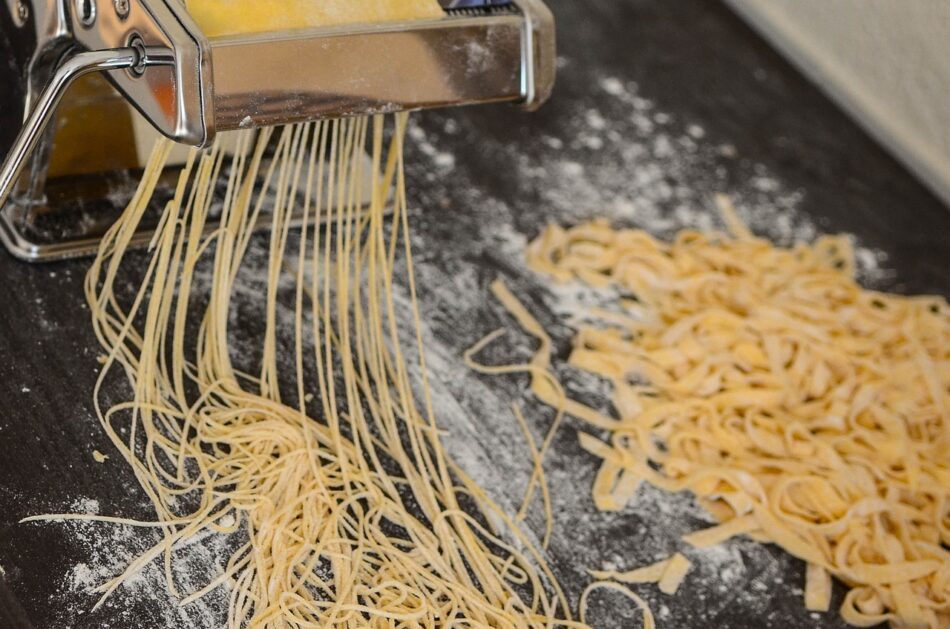When it comes to freezing pasta, the key is to make sure that the pasta retains its texture and flavor after being thawed. Pasta that has been frozen and thawed improperly can become mushy or lose its flavor.
To ensure the best quality pasta after freezing, it’s important to make sure the pasta is completely cooled and dry before freezing. This helps prevent ice crystals from forming on the noodles, which can cause freezer burn and affect the texture of the pasta.
Before freezing, portion the pasta into individual servings and place them in airtight containers or freezer bags. Label the containers with the date and contents before placing them in the freezer.
When it’s time to thaw the pasta, remove it from the freezer and let it sit in the refrigerator overnight. Avoid thawing it at room temperature to prevent the growth of bacteria.
By following these simple steps, you can freeze pasta for later use without compromising its quality. Just keep in mind the type of pasta you are freezing, as some types freeze better than others.
How to Freeze Cooked Pasta?
If you have too much pasta and hate to see it go to waste, freezing it for later use is a great option. To ensure the best quality pasta after freezing, there are some things you need to keep in mind. Firstly, it’s important to allow the pasta to cool completely. If the pasta is still warm when it’s placed in the freezer, moisture will form, which can lead to the development of ice crystals on the noodles.
Before portioning the pasta, make sure that it’s completely dry. Any excess moisture will cause the pasta to freeze together in a clump. To avoid this, spread the cooked pasta on a baking sheet and let it cool completely before portioning and freezing. You can portion the pasta and place it in airtight containers or freezer bags. Be sure to label the container with the date and contents before placing it in the freezer.
If you follow these steps, your frozen pasta will maintain its quality and freshness for up to two months. When you’re ready to use it, you can thaw it in the refrigerator overnight or quick-thaw it by placing the sealed container in a bowl of lukewarm water for 15-20 minutes. Avoid thawing the pasta at room temperature to prevent the growth of bacteria.
How to Thaw Frozen Pasta?
When it comes to thawing frozen pasta, there are a few things to keep in mind to ensure that it’s safe to eat and maintains its best quality. The best way to thaw frozen pasta is by removing it from the freezer and letting it sit in the refrigerator overnight. This allows the pasta to thaw slowly and evenly without the risk of bacterial growth.
However, if you’re in a rush, you can also quick-thaw your frozen pasta. To do this, simply place the sealed container of frozen pasta in a bowl of lukewarm water for 15-20 minutes. Be sure to change the water every five minutes or so to ensure that it stays warm and the pasta thaws evenly.
One thing to keep in mind when thawing frozen pasta is to avoid thawing it at room temperature. This can create the perfect conditions for bacteria to grow and can lead to foodborne illnesses. So, whether you choose to thaw your pasta in the fridge or through quick-thawing, be sure to do it safely to ensure delicious and healthy pasta every time.
What Types of Pasta Freeze the Best?
When it comes to freezing pasta, it’s important to consider the type of pasta you are working with. As mentioned earlier, pasta with a long, narrow shape, such as fettuccine, linguine, and spaghetti, freeze well without sacrificing texture or taste. However, pasta with a high water content, like tortellini and ravioli, can become mushy and unappetizing after thawing.
It’s important to note that while some pasta types may not freeze well on their own, they can still be frozen if they are part of a larger dish. For example, lasagna and baked ziti can be frozen and reheated without issue, even though they contain pasta that may not freeze well on its own.
If you’re unsure of how a particular pasta will hold up in the freezer, it’s always a good idea to do a small test batch before freezing a larger amount. This will allow you to see how the pasta reacts to freezing and thawing and make adjustments to your storage and reheating techniques if necessary.
How to Reheat Frozen Pasta?
Reheating frozen pasta is a simple process, but it requires a little bit of care to ensure that you achieve the best quality results. One option for reheating is to use a microwave. To do this, transfer the frozen pasta into a microwave-safe container and heat it for a couple of minutes. Make sure to stir the pasta every 30 seconds or so to ensure even heating.
Another option for reheating is to use the stovetop. To do this, thaw the pasta in the refrigerator and then heat it in a pan with your favorite sauce. Be sure to heat the pasta thoroughly to ensure that it is safe to consume.
Regardless of the method you choose, always check for any signs of spoilage before eating reheated pasta. If the pasta smells off or has an unusual texture, it is best to discard it and cook a fresh batch.
Conclusion
In conclusion, freezing cooked pasta is a convenient way to save time and reduce food waste. By following the proper steps, you can ensure that your pasta stays fresh and tasty even after freezing. It’s important to consider the type of pasta you want to freeze: long and narrow shapes like fettuccine, linguine, and spaghetti freeze well, while pasta with high water content like tortellini and ravioli can become mushy after thawing. Additionally, make sure to cool and dry the pasta completely before freezing, portion it into airtight containers or freezer bags, and label it with the date and contents before storing it in the freezer. By doing these steps, you can prevent the growth of bacteria and ensure that your frozen pasta stays fresh for months.








